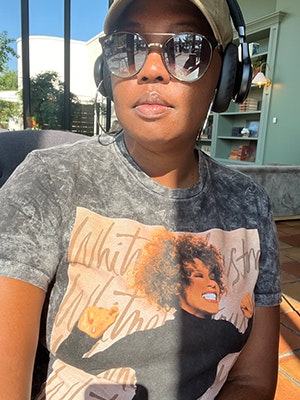Broad strokes of green. Bright flashes of pink, streaks of tan, white, and red comingling in a single brush stroke. Foad Satterfield’s canvases are layers of acrylic texture, pulling the viewer in to a chaos of colors that morph into new forms—trees, grass, wildflowers in a field, and the sky, all reflected in a rippled mirror of water.
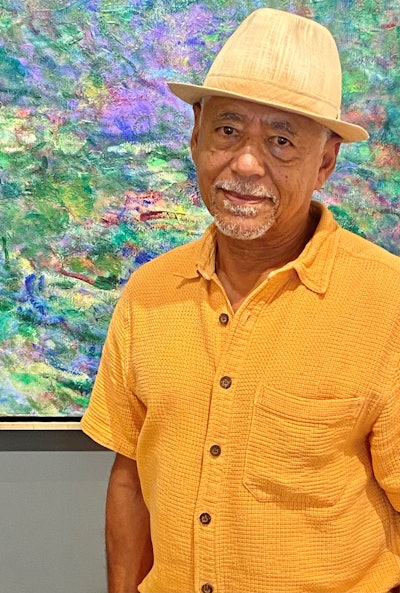 Foad Satterfield, professor emeritus of art at Dominican University.
Foad Satterfield, professor emeritus of art at Dominican University.
“I want this work to be in the world,” said Satterfield. “That’s my goal, it’s always been my mission: to make the most beautiful things to bring compassion, if only for a moment, to someone who may be suffering.”
Satterfield is professor emeritus of art at Dominican University in San Rafael, CA, where he taught for 38 years. He was born in 1945 and grew up on the Gulf Coast. He characterized himself as a sensitive, observant child, soaking in the wisdom of his great aunt and elder family members who raised him while his mother attended college and his father served as a marine. He was dedicated to his Singer sewing machine, cutting out fabrics and making his own shirts, dreaming of one day becoming a fashion designer.
For the first decade of his life, Satterfield lived in Orange, a small town in east Texas where he was “under the supernatural protection of love,” he said, safe from the racism of Jim Crow south. But when the family moved to Lake Charles, Louisiana, he began to get a true taste of the oppression, discrimination, and prejudice experienced everyday by his family, friends, and peers. He observed the strange dichotomy experienced by many Black individuals between the safety they felt inside their homes and the anxiety they experienced being outside.
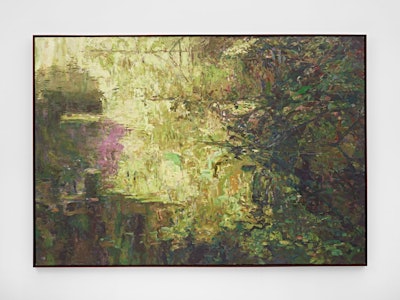 Jewel Lake No. 2, 2018, Satterfield.
Jewel Lake No. 2, 2018, Satterfield.
Satterfield said he continues to find solace in nature, that nature "takes the poison out.” His outdoor meditations allow him to create paintings that are messages of “compassion, love, and forgiveness," he said.
His Woodfox series has particular poignance.
Satterfield made several compositions inspired and named for Albert Woodfox in 2016, the same year Woodfox was released from prison. Woodfox had been accused, along with two other Black men, of the murder of a prison guard in 1972. All three asserted their innocence and said they had been blamed because of their affiliation with the Black Panther party.
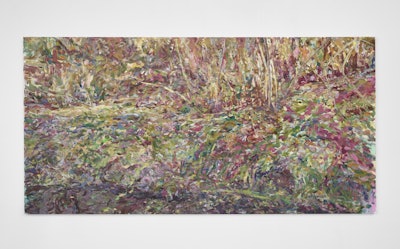 Woodfox No. 4, 2016, Satterfield.
Woodfox No. 4, 2016, Satterfield.
The inhumanity of Woodfox’s punishment tore at Satterfield's heart, he said. While activism and protest alleviated some of the pain, Satterfield found himself coming back to the same question: “What can I do?”
So, Satterfield went to the woods. He wandered to a quiet park near his home in Berkeley, CA, and sat down next to small cliff and a dried-up stream. He began to see the parallels between this space and the suffering of Woodfox.
“This has all the elements—a semblance of life almost being wiped out, life trying to restore itself but inhibited—and it’s a horizonal composition, laying down as opposed to standing up—all the decomposing and fertile materials, life and death existing in the same plane,” said Satterfield. “To transpose it into natural elements to tell that same story, you’ve got to get a chance to be in front of it for a minute.
That’s why Satterfield hopes his audience will take the time to sit and observe his paintings, to see what they can discover when given the permission for space, peace, and quiet.
“I want the work to be inspiring,” said Satterfield. “I’m hoping the work can be placed into national venues, because I think it expands what we’re all about, our humanity and relationships, building upon that, trying to find healthy ways to deal with the trauma, making the work and using nature as a healing element.”
Liann Herder can be reached at [email protected].
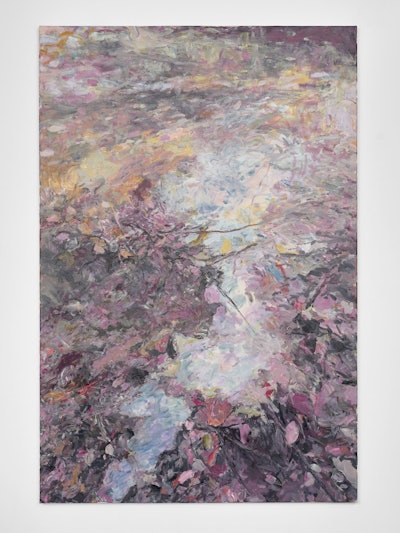 Flow, 2022, Satterfield.
Flow, 2022, Satterfield.






















